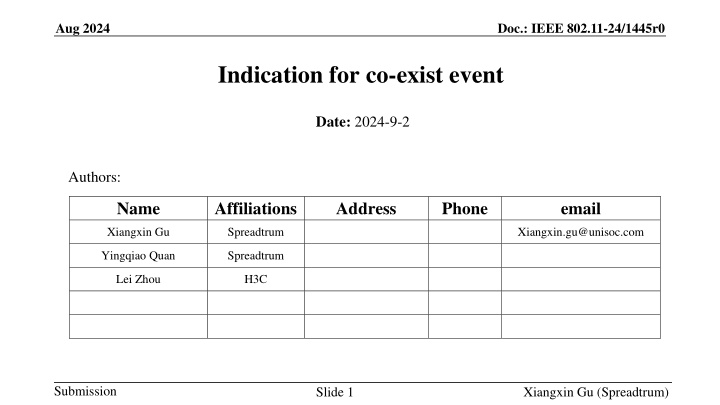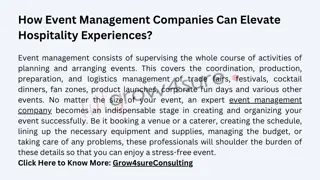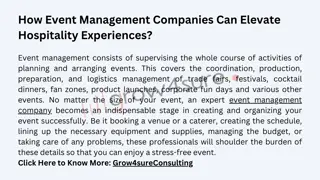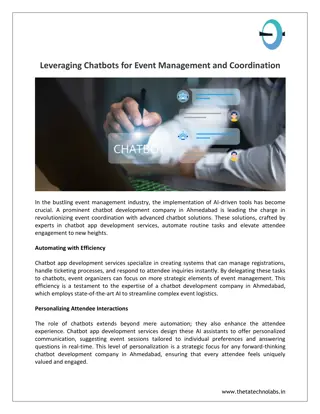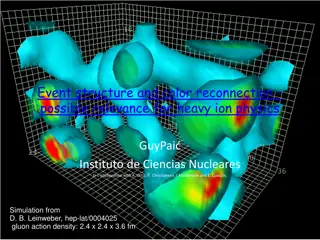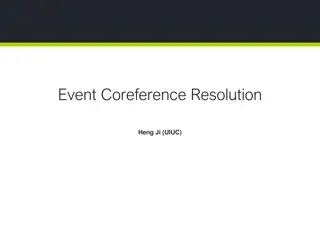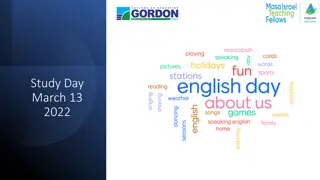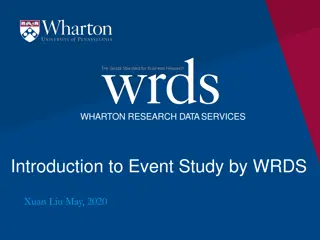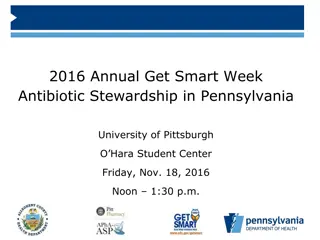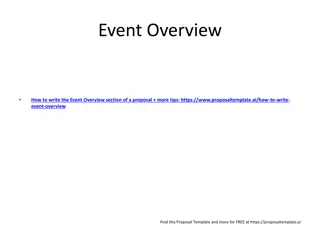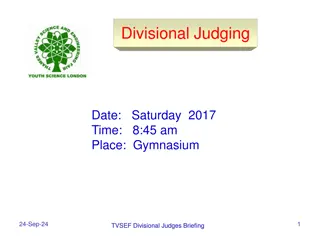Co-exist Event Analysis and Solutions
This document presents an analysis of co-existence events in IEEE 802.11 networks and proposes solutions for aperiodic events. It discusses signaling mechanisms for different types of co-existence events and offers strategies to inform peers about event parameters and real-time occurrences.
Download Presentation

Please find below an Image/Link to download the presentation.
The content on the website is provided AS IS for your information and personal use only. It may not be sold, licensed, or shared on other websites without obtaining consent from the author.If you encounter any issues during the download, it is possible that the publisher has removed the file from their server.
You are allowed to download the files provided on this website for personal or commercial use, subject to the condition that they are used lawfully. All files are the property of their respective owners.
The content on the website is provided AS IS for your information and personal use only. It may not be sold, licensed, or shared on other websites without obtaining consent from the author.
E N D
Presentation Transcript
Aug 2024 Doc.: IEEE 802.11-24/1445r0 Indication for co-exist event Date: 2024-9-2 Authors: Name Affiliations Address Phone email Xiangxin Gu Spreadtrum Xiangxin.gu@unisoc.com Yingqiao Quan Spreadtrum Lei Zhou H3C Submission Slide 1 Xiangxin Gu (Spreadtrum)
Aug 2024 Doc.: IEEE 802.11-24/1445r0 Introduction 11bn defines a mechanism for a non-AP STA to report unavailability at TXOP level and define or reuse/update existing mechanism for a non-AP STA to report long term (periodic) unavailability. [Motion #30, [1] and [66-82]] In this contribution, we analyze co-existence events and provide solutions for aperiodic events. Submission Slide 2 Xiangxin Gu (Spreadtrum)
Aug 2024 Doc.: IEEE 802.11-24/1445r0 Different kinds of co-existence events Periodic and predictable Co-ex event characters like periodicity and event duration can be signaled to the peer in advance. It is feasible for the peer to not transmit to it in the event duration. For aperiodic events, available solutions: Informing the peer in advance. not always success because of stringent time Querying before transmission. Leads to much overhead. Submission Slide 3 Xiangxin Gu (Spreadtrum)
Aug 2024 Doc.: IEEE 802.11-24/1445r0 Proposal 1 for aperiodic co-ex events Inform the peer the statistic parameters of the events Such as average periodicity, average duration, largest duration, etc. The peer can take use of these parameters and make better transmission, such as Transmitting at time of a lower possibility to encounter co-ex events. Not downgrading MCS right after a transmission failure Deciding the time to retransmit AP Co-ex Events Off (parameters) Co-ex Events On (parameters) STA Open BT, Close BT, . Submission Slide 4 Xiangxin Gu (Spreadtrum)
Aug 2024 Doc.: IEEE 802.11-24/1445r0 Proposal 2 for aperiodic co-ex events Signal the peer the information of the event just happened and not informed ahead. Such as the start time and the duration of the event. To trigger a retransmission without MCS downgrade for a transmission failure caused by the coex event. The peer can use the information in deciding MCS adjustment. This scheme can work together with the proposal 1. After the peer is informed that there would be co-ex events, it assumes that a transmission failure are caused by co- ex event at first. In case no indication of happened co-ex event, it takes a transmission failure as it is caused by channel fading or collision in the air. Data Data AP BA Co-ex Event happened Co-ex Event happened STA Submission Slide 5 Xiangxin Gu (Spreadtrum)
Aug 2024 Doc.: IEEE 802.11-24/1445r0 Summary In this contribution, we discuss the aperiodic co-ex events and provide 2 solutions. Inform the peer the statistic parameters of the events Signal the peer the information of the event just happened and not informed ahead. Submission Slide 6 Xiangxin Gu (Spreadtrum)
Aug 2024 Doc.: IEEE 802.11-24/1445r0 SP 1: Do you agree to inform the peer the following statistic parameters of aperiodic co-ex events? Average periodicity Average duration of the events Largest duration of the events Submission Slide 7 Xiangxin Gu (Spreadtrum)
Aug 2024 Doc.: IEEE 802.11-24/1445r0 SP 2: Do you agree to optionally signal the peer the coex event just happened and not informed ahead with following information for aperiodic coex events? The starting time of the event The duration of the event Submission Slide 8 Xiangxin Gu (Spreadtrum)
Aug 2024 Doc.: IEEE 802.11-24/1445r0 References [1] 11-23-1934-00-00bn-in-device-interference-mitigation-follow-up Liwen Chu [2] 11-23-1964-01-00bn-coexistence-protocols-for-uhr Alfred Asterjadhi [3] 11-23-2002-02-00bn-in-device-coexistence-and-interference-follow-up Laurent Cariou [4] 11-23-2026-00-00bn-balanced-wireless-in-device Brian Hart [5] 11-23-2078-05-00bn-coex-enhancement-for-xr-use-cases Guoqing Li [6] 11-24-0094-00-00bn-probe-before-talk-and-unsolicited-unavailability-announcement-for-co-ex- management Qi Wang [7] 11-24-0420-00-00bn-enabling-flexible-coexistence-operation Guogang Huang [8] 11-24-0436-00-00bn-sp-based-in-device-coexistence Jason Guo [9] 11-24-0494-02-00bn-in-device-coexistence-follow-up Liwen Chu Submission Slide 9 Xiangxin Gu (Spreadtrum)
